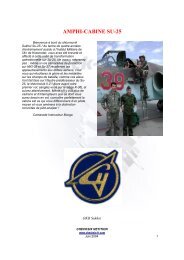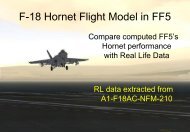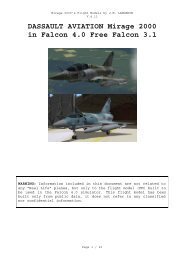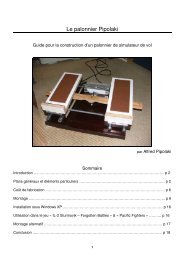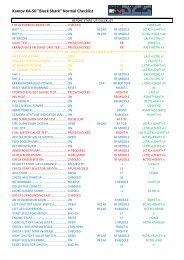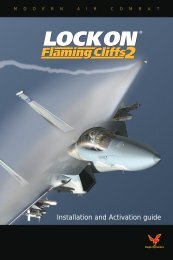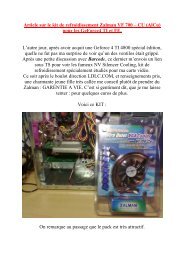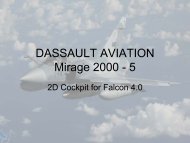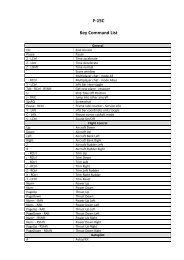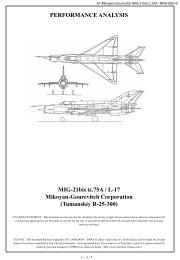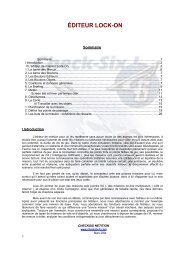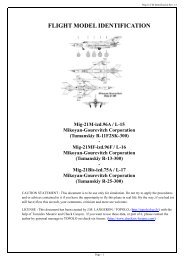AFI 11-246v1_Aerial - Check six
AFI 11-246v1_Aerial - Check six
AFI 11-246v1_Aerial - Check six
Create successful ePaper yourself
Turn your PDF publications into a flip-book with our unique Google optimized e-Paper software.
22 <strong>AFI</strong><strong>11</strong>-246V1 22 NOVEMBER 2002<br />
Section 3A—General Guidelines<br />
Chapter 3<br />
A-10 DEMONSTRATION MANEUVERS<br />
3.1. General. Maneuvers described in this chapter will be used for training and for A-10 aerial demonstrations.<br />
The demonstration sequence is designed so each maneuver is normally performed in the same<br />
direction with respect to the crowd line. As a result, the show is always oriented the same way from the<br />
spectators' point of view. The only exception to this is when wind direction and velocity make it advantageous<br />
to change the direction of the slow speed pass. In this case, the remaining maneuvers are flown in<br />
the opposite direction. Abnormal Procedures are written for each maneuver. If the entry conditions are not<br />
met for any maneuver, a wings-level pass will be flown and the pilot will transition to the next maneuver.<br />
Demonstration pilots will transmit parameters prior to initiating the descending portion of vertical<br />
pull-throughs and Vertical Reposition maneuvers. These calls will be made anytime between the point the<br />
pilot climbs through the minimum over-the-top (OTT) altitude designated in each maneuver description<br />
up to the point the pilot reaches apex altitude. Ground safety observer will monitor demonstration pilot<br />
altitude and airspeed radio calls and direct an abort when parameter limits are exceeded.<br />
3.2. Aircraft C onfiguration and Fuel Requirements. Aircraft configuration for all demonstrations will<br />
be clean. Each demonstration uses approximately 1,000 pounds of fuel. Optimum performance is<br />
obtained when fuel load is 3,500 pounds; however, the demonstration can be safely accomplished with a<br />
higher fuel load as long as the wing tanks are empty. The minimum fuel to start the show is 2,500 pounds.<br />
3.3. Airspeed and G-Limits. The A-10 demonstration is flown at max power except when slowing to<br />
configure for the slow speed pass or slowing to configure for the minimum run landing. The maximum<br />
Target G for this demonstration profile is 6.0 Gs. This does not preclude a momentary increase in G for<br />
safety considerations.<br />
3.4. Show line Restrictions. The majority of the A-10 demonstration will be flown on the 1,500-foot<br />
show line in reference to the distance from the crowd. Non-aerobatic maneuvers (less than 90 degrees of<br />
bank) may be flown on the 500-foot show line.<br />
3.5. Airspace and Runway Requirements. Required airspace for the A-10 is 7,000 feet AGL vertically<br />
and normally a five-mile radius from show center horizontally. The minimum dimensions of the aerobatic<br />
box are 2,700 feet wide, 4,000 feet long, and 7,000 feet AGL (high show). Minimum runway length is<br />
5,000 feet x 75 feet. The runway, taxiway, and parking area must be stressed for a 35,000-pound aircraft<br />
with single wheel type landing gear.<br />
3.6. Weather Requirements. Weather PARAMETER LIMITS for the high profile are a ceiling of at<br />
least 4,000 feet, 3 miles ground and 5 miles in-flight visibility with a discernible horizon. Ceiling required<br />
for the low profile is 2,500 feet. Maneuvers will be planned to maintain VMC throughout the show<br />
sequence.<br />
3.7. Repositioning Turn.



